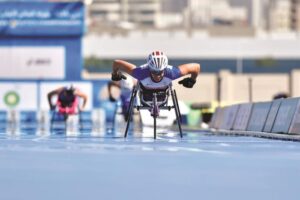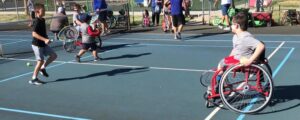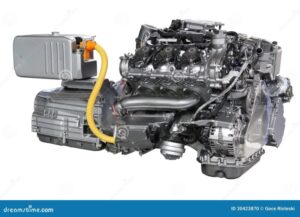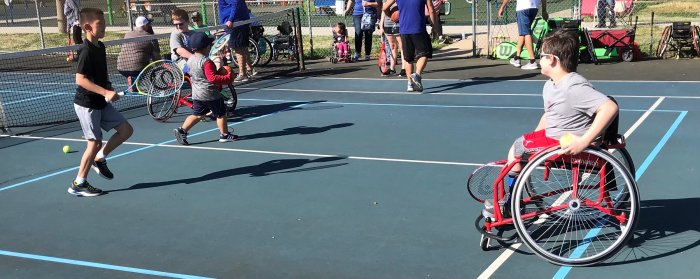
Adaptive tennis programs offer a transformative experience for individuals with disabilities, allowing them to engage in a sport that promotes physical fitness, social interaction, and personal achievement. These programs are designed to be inclusive, providing tailored coaching, specialized equipment, and unique opportunities that empower players of all abilities to thrive on the court.
From the use of adaptive equipment that accommodates various physical needs to the involvement of key organizations advocating for the sport, adaptive tennis is a remarkable initiative that fosters a sense of community and belonging. Whether you’re a seasoned player or new to the game, these programs are structured to ensure everyone can enjoy the benefits of tennis.
Overview of Adaptive Tennis Programs

Adaptive tennis programs are designed to provide opportunities for individuals with disabilities to engage in tennis, a sport that promotes physical fitness, social interaction, and a sense of community. These programs aim to remove barriers to participation, ensuring that everyone, regardless of their physical capabilities, can enjoy the benefits of tennis. By creating inclusive environments and tailored training sessions, adaptive tennis fosters not only skill development but also personal growth and confidence among participants.The structure of adaptive tennis programs may vary, but they often include specialized coaching, modified rules, and accessible facilities.
Many programs offer lessons that accommodate different types of disabilities, whether they are physical, intellectual, or sensory. Coaches are trained to adapt drills and practices to suit individual needs, which can involve changing court dimensions, using modified scoring systems, or implementing assistive technology. These tailored approaches facilitate participation and ensure that each player can enjoy the game at their own level.
Adaptive Equipment Used in Tennis
Adaptive tennis utilizes a variety of specialized equipment to enhance accessibility and ensure a level playing field for all athletes. The following equipment types are commonly used:
- Wheelchair Tennis Chairs: Designed with lightweight materials, these chairs allow players to move swiftly on the court. They often feature slanted frames to enhance maneuverability and stability during play.
- Modified Tennis Balls: These balls may be softer or larger, making them easier to hit for those with reduced hand strength or coordination. Some programs use balls that bounce lower to accommodate different skill levels.
- Adaptive Rackets: Rackets can be customized with larger grips or lightweight designs, making them easier for players with limited hand strength or dexterity to hold and swing.
- Assistive Technology: Devices like sound-emitting tennis balls assist visually impaired players in locating the ball, enabling them to participate fully in the game.
Adaptive tennis programs emphasize the importance of selecting the right equipment to enhance performance and enjoyment. Coaches often provide guidance on choosing the appropriate tools based on individual needs and preferences, ensuring that every player can participate to the fullest extent.
Key Organizations Promoting Adaptive Tennis Initiatives
Several organizations around the globe are dedicated to promoting and supporting adaptive tennis initiatives. These organizations play a crucial role in developing programs, providing resources, and advocating for inclusivity in the sport. The following are some prominent entities within the adaptive tennis community:
- Special Olympics: This organization offers competitive opportunities for athletes with intellectual disabilities, including tennis. Special Olympics helps facilitate training and competitions worldwide, fostering an inclusive sports environment.
- United States Tennis Association (USTA): USTA promotes adaptive tennis through various initiatives, providing resources and support for local programs, including grants and training for coaches.
- International Tennis Federation (ITF): The ITF oversees the development of tennis globally and implements programs specifically aimed at increasing participation among individuals with disabilities.
- National Wheelchair Tennis Association (NWTA): NWTA focuses on enhancing wheelchair tennis in the U.S. by organizing tournaments, coaching clinics, and development programs to increase participation.
These organizations work tirelessly to ensure that adaptive tennis continues to grow and reach as many individuals as possible, breaking down barriers and promoting a culture of inclusivity in the sport.
Legal Considerations and Issues in Adaptive Sports
The legal landscape surrounding adaptive sports, including tennis, is dynamic and essential for safeguarding the rights of athletes with disabilities. Several laws and regulations establish a framework that ensures equal opportunities and protection against discrimination. Understanding these laws is crucial for organizations, coaches, and participants involved in adaptive sports.The primary legislation that impacts adaptive sports in the United States includes the Americans with Disabilities Act (ADA), Section 504 of the Rehabilitation Act, and the Individuals with Disabilities Education Act (IDEA).
These laws collectively prohibit discrimination and promote accessibility in sports programs. The ADA, in particular, is pivotal as it extends protections to all individuals with disabilities, ensuring they have equal access to facilities, programs, and services.
Legal Frameworks in Adaptive Tennis Compared to Other Sports
When comparing the legal frameworks governing adaptive tennis to other sports, such as martial arts and motorsports, it is evident that while the foundational laws are similar, their applications may vary. In adaptive tennis, the focus is on inclusivity and providing modifications to allow athletes to compete on an equal footing. Conversely, martial arts may face challenges regarding contact and safety regulations, which can be more complex due to the physical nature of the sport.
Motorsports, while also regulated by disability laws, often involve different considerations, such as vehicle modifications and safety standards, which may not apply to tennis.
- Americans with Disabilities Act (ADA): Protects individuals with disabilities from discrimination in various areas, including sports.
- Section 504 of the Rehabilitation Act: Ensures that individuals with disabilities have equal access to programs receiving federal funding, including sports.
- Individuals with Disabilities Education Act (IDEA): Focuses on educational rights and provisions for students with disabilities, impacting their participation in school sports.
- State-Specific Laws: Various states may have additional regulations that supplement federal laws, enhancing protections for athletes in adaptive sports.
Potential Legal Issues in Adaptive Tennis Programs
Adaptive tennis programs may encounter various legal issues that require careful attention. These can include accessibility challenges, policy compliance, and liability concerns. Addressing these issues proactively can help organizations avoid legal disputes and ensure a supportive environment for athletes.The following are potential legal issues that may arise:
- Accessibility Compliance: Facilities must meet ADA standards to ensure that all athletes can participate without barriers.
- Liability and Insurance: Organizations need to secure appropriate insurance coverage to protect against injuries and claims that may arise during participation.
- Discrimination Complaints: Participants may file complaints if they feel discriminated against, necessitating a clear grievance policy to address concerns.
- Program Modifications: Ensuring that adaptive modifications are effectively implemented to accommodate athletes’ needs is crucial in preventing legal challenges.
“Equal access and opportunity in sports is not just a right; it’s essential for empowerment and inclusion.”
Integration of Adaptive Tennis with Other Sports
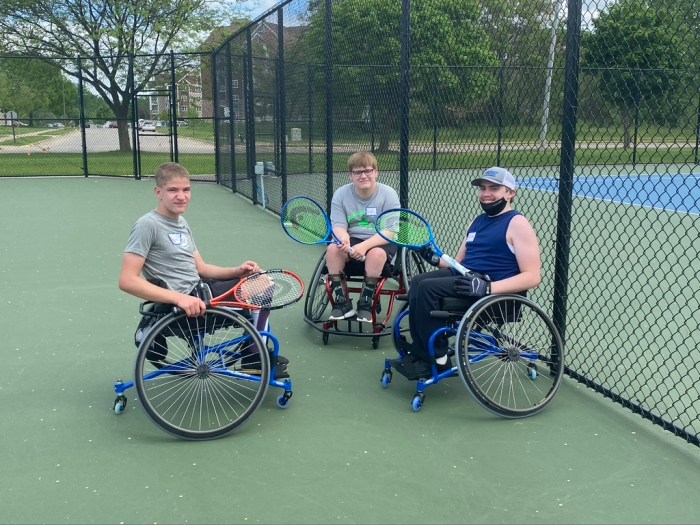
Adaptive tennis serves as a unique intersection between various sports, highlighting the versatility and inclusivity that can be achieved when integrating different athletic disciplines. The approach not only enhances the physical and mental well-being of participants but also fosters a supportive community that embraces diversity in sports. The connections between adaptive tennis and other sports, such as strength sports and team sports, are significant.
Adaptive tennis incorporates elements of strength-building, coordination, and teamwork, similar to what is seen in conventional sports. Athletes can benefit from strength training regimens that are tailored to their unique needs, enhancing their performance in tennis while also preparing them for additional sports activities.
Connections with Strength Sports and Team Sports
Integrating adaptive tennis with strength sports and team sports can create a well-rounded athletic experience for participants. This integration can occur through cross-training and shared training facilities. Here are some notable connections:
- Shared Strength Training Regimens: Adaptive tennis players can engage in strength training exercises that improve their overall power and stability, essential for effective movement on the court.
- Team Dynamics: Many adaptive tennis programs emphasize team play, allowing participants to build relationships and learn cooperative strategies, paralleling team sports.
- Skill Transfer: Skills developed in adaptive tennis, such as hand-eye coordination and strategic thinking, are transferable to other sports, enhancing athletic versatility.
Promoting Inclusivity in Various Sports
Inclusivity is critical in sports, and adapting various disciplines to fit the needs of individuals with disabilities can be achieved through several methods. In water sports and winter sports, for instance, inclusive practices help to create an environment where everyone can participate. Here are some effective methods to promote inclusivity:
- Adaptive Equipment: Utilizing specially designed equipment, such as sit-skis for winter sports or adaptive paddleboards for water sports, can significantly enhance access for athletes.
- Training Programs: Offering training programs that educate coaches and instructors on adaptive techniques ensures a supportive environment for all athletes.
- Awareness Campaigns: Hosting events that showcase adaptive sports and encourage participation helps raise awareness and foster interest among potential athletes.
Adaptive Tennis Programming Strategies Across Disciplines
Understanding how adaptive tennis programming strategies compare with those used in other sports disciplines is essential for developing effective inclusive initiatives. Various sports have adopted unique strategies that can inform adaptive tennis programs:
- Individualized Coaching: Like many adaptive sports, tennis benefits from personalized coaching approaches that cater to the specific abilities of each athlete, seen in sports like swimming and athletics.
- Community Engagement: Engaging the local community through events and initiatives is a common strategy across sports disciplines, promoting inclusivity and participation in adaptive tennis.
- Competition Models: Adaptive tennis often mirrors competition structures found in other sports, allowing for categories based on skill level and physical ability, similar to adaptive track and field competitions.
Closure
In summary, adaptive tennis programs not only enhance athletes’ skills but also promote inclusivity and camaraderie among participants. As we continue to explore and develop adaptive sports, the importance of legal support and integration with other sports cannot be understated. By championing these initiatives, we pave the way for a future where everyone can experience the joy of tennis, regardless of their abilities.
Common Queries
What types of disabilities can participate in adaptive tennis programs?
Adaptive tennis programs are designed for individuals with a wide range of disabilities, including physical, visual, and intellectual disabilities.
Is adaptive tennis played on standard courts?
Yes, adaptive tennis can be played on standard tennis courts, although modifications may be made to accommodate players’ needs, such as using larger balls or modified rules.
How can I get involved in an adaptive tennis program?
To get involved, you can reach out to local tennis clubs or organizations that offer adaptive sports programs and inquire about their offerings.
Are there any competitions for adaptive tennis players?
Yes, there are competitions and tournaments specifically for adaptive tennis players, providing opportunities to showcase their skills and compete.
What kind of training do coaches receive for adaptive tennis?
Coaches in adaptive tennis programs often undergo specialized training to understand the unique needs of athletes with disabilities and how to provide effective instruction.
